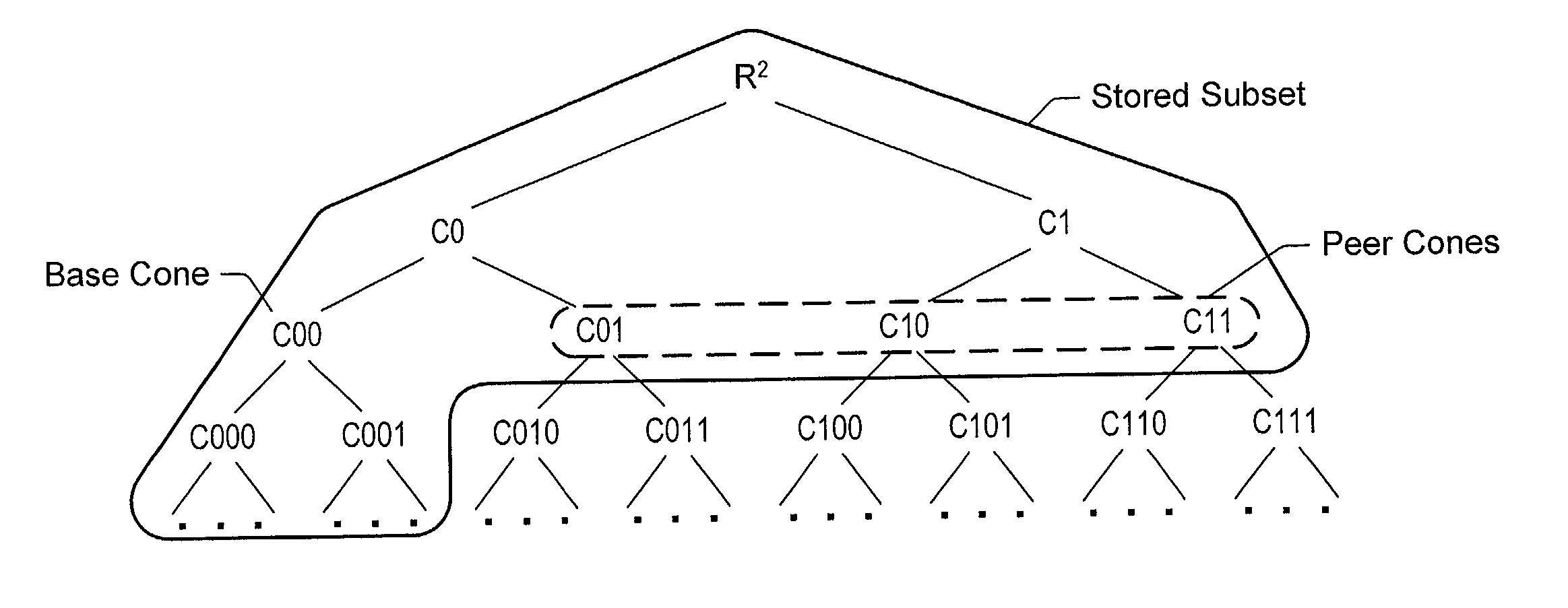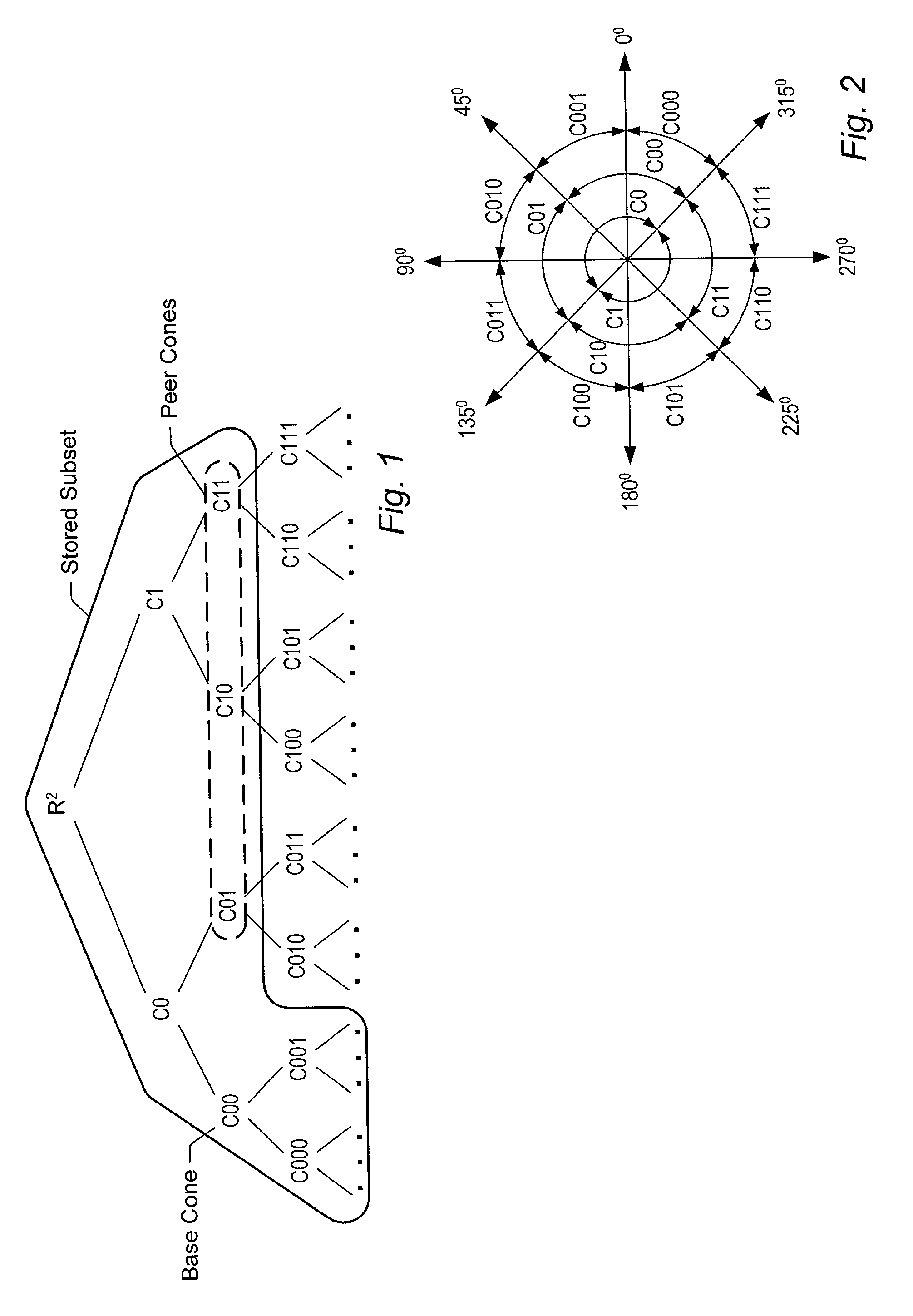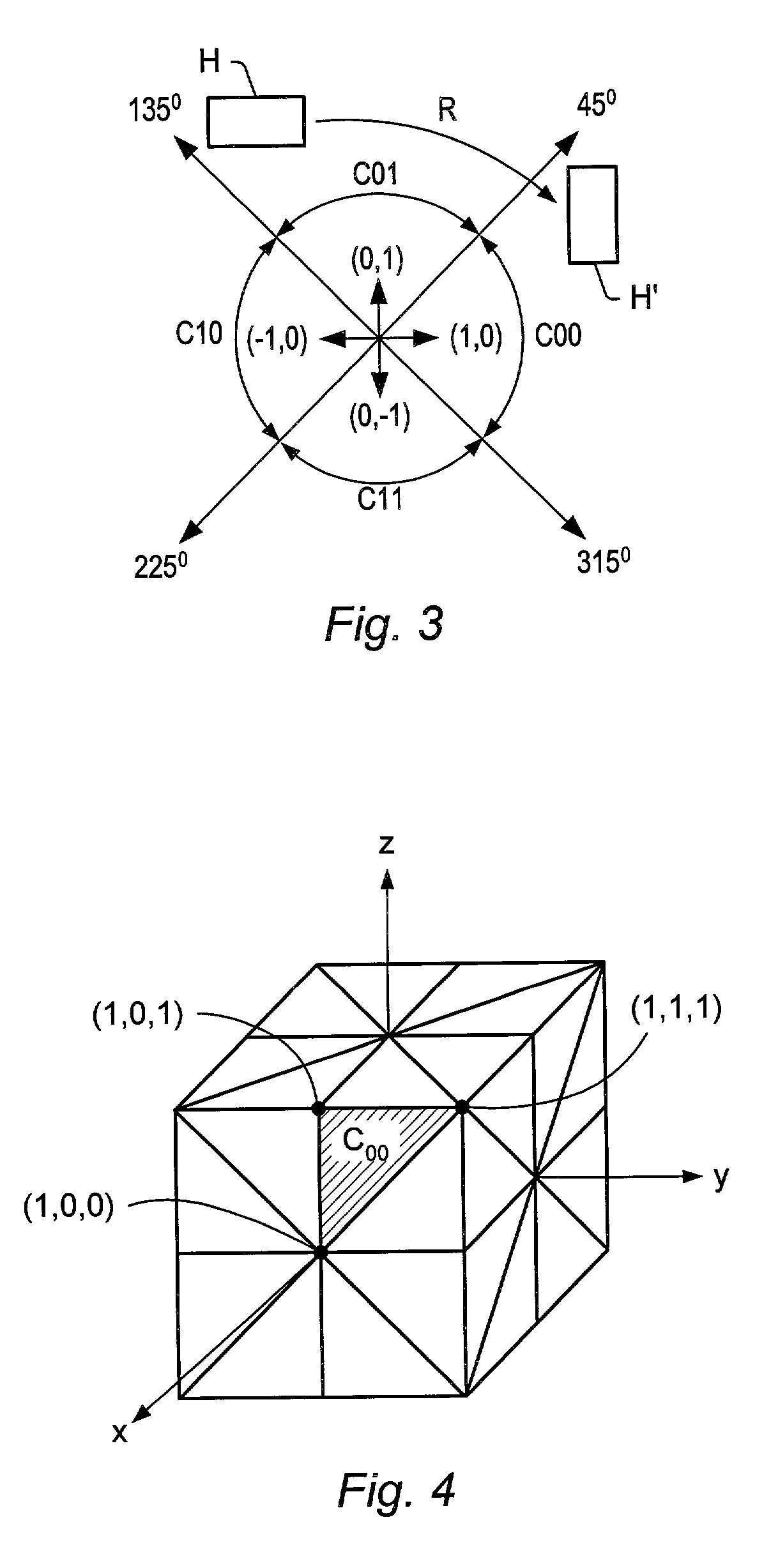Geometric folding for cone-tree data compression
a data compression and geometries technology, applied in the field of computer graphics, can solve the problems of reducing the efficiency of graphics hardware systems, and requiring users to view more and more complex scenes at reasonable frame rates, so as to achieve the effect of increasing efficiency
- Summary
- Abstract
- Description
- Claims
- Application Information
AI Technical Summary
Benefits of technology
Problems solved by technology
Method used
Image
Examples
Embodiment Construction
[0041] In one set of embodiments, a graphical computing system may be configured to operate on a collection of graphical objects so as to determine which of the objects are visible from a current viewpoint. The system searches a hierarchical tree of bounding hulls (or more general bounding structures) and a hierarchical tree of cones.
[0042] The tree of bounding hulls may be constructed from the bottom up, i.e. by generating first-order bounding hulls enclosing the graphical objects, second order bounding hulls enclosing groups of the first order bounding hulls, and so on, until at some level there is a single bounding hull enclosing the whole collection of objects.
[0043] The tree of cones may be constructed from the top down. A three dimensional space may be interpreted as a cone (i.e. as the union of all rays emanating from the origin). The 3D space may be partioned into some number of first order subcones. The first order subcones may be partitioned into second order subcones, and...
PUM
 Login to View More
Login to View More Abstract
Description
Claims
Application Information
 Login to View More
Login to View More - R&D
- Intellectual Property
- Life Sciences
- Materials
- Tech Scout
- Unparalleled Data Quality
- Higher Quality Content
- 60% Fewer Hallucinations
Browse by: Latest US Patents, China's latest patents, Technical Efficacy Thesaurus, Application Domain, Technology Topic, Popular Technical Reports.
© 2025 PatSnap. All rights reserved.Legal|Privacy policy|Modern Slavery Act Transparency Statement|Sitemap|About US| Contact US: help@patsnap.com



